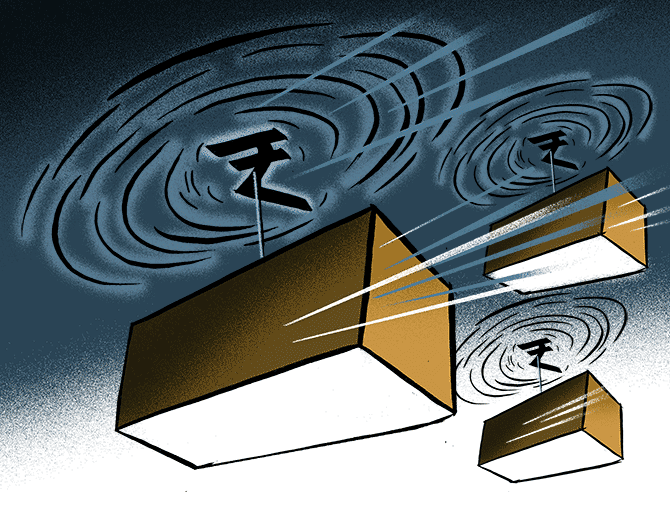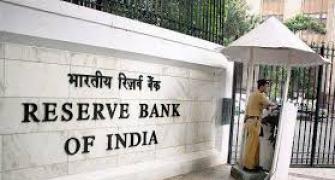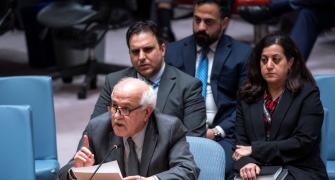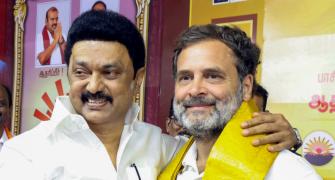There is merit in considering whether merchandise exports can be facilitated by halting if not reversing the rupee’s appreciation, says T N Ninan.
Illustration: Dominic Xavier/Rediff.com.

The rupee’s external value is in the news again, with Nirmala Sitharaman, the commerce and industry minister, apparently modifying her earlier stance and signalling that she is comfortable with the rupee’s rising exchange value -- though, contrarily, the Reserve Bank has been busy buying dollars in recent weeks, presumably in order to try and stem the rupee’s rise.
The minister’s current position is in sync with the intuitive belief of several people in the ruling camp, that a strong currency reflects economic strength.
During the 2014 election campaign, it was even held up as an example of Congress mismanagement of the economy that the rupee had slipped so much from parity with the dollar in 1947.
Of course there never was any such parity; India’s currency had been pegged to the pound, not the dollar, and the exchange rate even in 1901 was Rs 15 to the pound.
History aside, should the country get comfortable with the idea of a stronger currency?
The argument would be that the world has changed, and for a variety of reasons foreign exchange crises are less likely henceforth. Such crises in the last half-century were linked to spurts in oil prices.
While no one can safely predict what will happen with oil, the advent of shale oil has transformed the global oil economy.
Barring a crisis in the Gulf, a sharp oil price spurt must now be reckoned a low-probability risk.
For India, this should mean that the overall deficit on trade in goods and services will remain small enough to be more than covered by remittances from Indians overseas and by foreign capital inflows.
Inflows on the capital account (both equity and debt) more than made up for current account deficits in eight out of the last 10 years -- leading to the accumulation of dollar reserves in most years.
That is not a helpful circumstance for trying to k eep down the rupee.
On the other hand, it has been an article of faith with many economists that poor countries trying to break into export markets need the help of a cheap currency.
The best example of this is China, which kept down the renminbi for long years, despite large and growing trade surpluses.
Before China, Japan was accused of following a cheap currency policy to achieve its massive export successes, until in 1985 the US arm-twisted Tokyo into upping the value of the yen.
Taiwan, in turn, maintained a fixed exchange rate with the dollar for a quarter-century till 1985, though it enjoyed trade surpluses from the early 1970s.
During India’s freedom movement, nationalist opinion had been that Britain was artificially keeping the rupee pegged too high, in order to put Indian producers at a disadvantage vis-a-vis those in Britain.
Post-independence, the fact that the rupee was over-valued all the way to 1991 (thereby pricing out exports) has been seen as an important reason for the country’s perennial trade deficits and shortage of foreign exchange until then.
So there is a long pedigree to the argument against the rupee being over-priced -- which, according to Reserve Bank calculations, it is today in the trade context.
Today the fact is that the country has a large deficit on trade in goods.
Since it is better to earn dollars through exports than to borrow them, there is merit in considering whether merchandise exports can be facilitated by halting if not reversing the rupee’s appreciation.
The solution is to focus on the source of the dollar surpluses: Capital inflows, and debt inflows in particular.
Policy changes allowed overseas debt to climb sharply in the relatively recent past, and these changes can and should be reversed.
Such stanching of debt inflows would allow the rupee to reflect more faithfully the position on the trade account, and thereby facilitate faster economic growth through higher exports.








